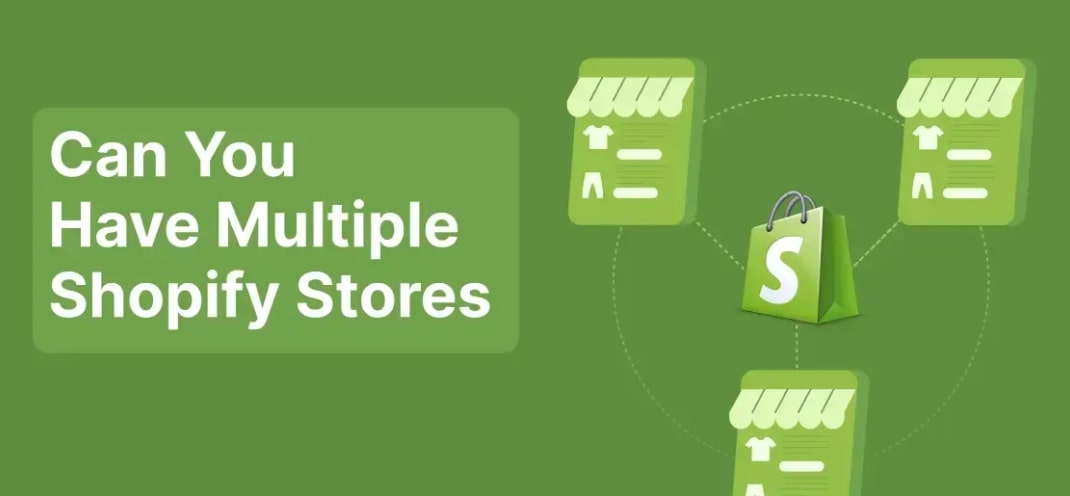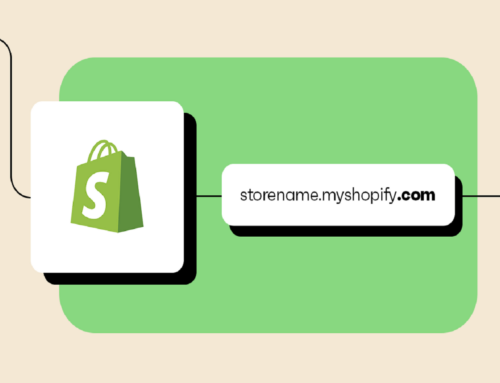Expanding your Shopify business can significantly enhance your market reach and potential for expansion. So, can I have multiple stores on Shopify? The answer is yes. Thanks to creating multiple Shopify stores, you can target new markets and diverse audiences; however, this also entails managing several sales channels, which may become quite challenging.
In this article, BSS Commerce Shopify will provide a detailed explanation for the query “Can you have multiple Shopify stores?“ and how to set up multiple Shopify stores to successfully scale your brand. Besides, we will introduce some tips and best practices that can simplify the management of multiple Shopify stores.
Are you ready? Let us begin!
Contents
Can You Have Multiple Shopify Stores?
Yes. Shopify permits the establishment of multiple stores within a single account.
To create a new store on Shopify, sign up and follow the registration process. This procedure closely resembles the account creation process for other online services and can be accomplished swiftly and effortlessly.
If you have multiple products or services you can have multiple Shopify stores. This is often a good idea as you can have separate marketing and audience for each product or service. Or if you don’t have many suppliers, products or services and want a simple approach, one store can be enough for all your offerings. In this case create subcategories in your store so customers can easily find specific product types.
Also remember each store has a monthly subscription fee. So if you have multiple stores you will have to pay for each one. And these subscription fees vary based on the plan you choose for your store. The most basic plan is Basic Shopify which is $29 USD/month.
Read more: Shopify Multiple Stores: How to Set Up Guide & Expert Tips
Key Benefits of Using Multiple Shopify Stores
Discover the advantages of launching multiple Shopify stores. From targeting different audiences to increasing revenue, learn how this strategy can benefit your Shopify store:
#1. Target a New Audience
Having multiple stores within your Shopify platform allows you to offer different products to different segments of your customers, especially if you have a wide range of products. Even if your customers are in the same geographic area, you may want to segment them by different demographics.
In those cases, you can create an additional store to keep your original brand identity and modify the messaging and sometimes pricing and products to suit your new audience.

#2. Expand Your Business Into a New Region
To go global, consider the challenges, shopping habits and consumer behavior in those markets. Having separate Shopify stores for each country allows you to optimize your website and products for each audience.
This way you can have websites in the local language of your target market, show region specific promotions and display product prices in the customers local currency. Shopify Markets can help with this but it doesn’t give you the level of customization for each individual store.
On the other hand, having regional stores simplifies the fulfillment process, you can allocate inventory across different locations so customers get products faster and merchants get simplified logistics.
#3. Create a Retail Outlet
One of the reason to launch another Shopify store is to create an outlet store. An outlet store allows you to sell overstocked or end of season products at discounted prices. This way you can clear out inventory and increase sales while giving customers the benefit of getting products at a lower price.
#4. Separate Product Categories
Some Shopify stores may want to create spin-off lines or a secondary brand within the same company umbrella. This can be useful when introducing a product that targets a demographic beyond your usual customer base. For example a luxury brand may want to launch a secondary brand that offers more affordable entry level products.
You may concern: Shopify Product Taxonomy: Increase Sales and Traffic on Shopify

#5. Tax Strategy and Compliance
Creating a new store as a separate entity may be wise especially for tax and compliance reasons depending on your expansion location. Different countries have different corporate laws and requirements. For example, if your operations are based in North America and you want to expand into Europe you may be subject to different tax liabilities in the country where your customers reside. Even if tax is not required in the selling region you may still want to do so depending on the situation.

How to Create Multiple Shopify Stores on One Account
Can I have multiple Shopify stores? Yes. You can create multiple stores under a single Shopify account; however, certain restrictions apply.
For instance, it is not permissible to create a store with the same name or a name that closely resembles that of an existing store. Attempting to do so will result in a warning from Shopify, indicating that such duplication may lead to customer confusion and hinder their ability to locate the appropriate store.
Furthermore, selling identical products across two different stores is not allowed. The only alternative is to develop two distinct websites utilizing different domains, which could potentially confuse customers accustomed to searching for your products on a single domain. Hence, ensure that your products and content are not duplicated, you can maintain as many stores as you desire on Shopify.
There are several methods available for managing multiple Shopify stores. You may choose to:
- Create a new store using a different email address.
- Utilize the same email address while setting up a new payment processor for your current store.
- Maintain the same email address and payment processor, but develop a second website for an additional store.
It is feasible to add multiple domains into a single store and redirect them to the same location. However, if your goal is to launch a new Shopify store with distinct products and suppliers, creating a separate store may be more advantageous. Employing the same email address to add new stores can enhance functionality, allowing for efficient management of your stores.
Managing multiple stores can facilitate international sales or enable targeted localized marketing efforts. This approach allows you to effectively engage with your desired audience, and each store can contribute positively to your overall business.
You can create an individual website for each business concept or establish different storefronts for various product lines. The decision rests with you! By considering your target market and competition, you can optimize all your Shopify stores to improve conversion rates.
Tips to Manage Multiple Shopify Stores Properly
Managing multiple stores on Shopify can be tough for many businesses. Here are the problems with managing multiple Shopify stores and here’s how you can manage your Shopify store:
#1. Use Customer Relationship Management (CRM) for Customer Support
Shopify online stores must prioritize customer satisfaction to stay competitive. For store owners, managing customer support across multiple stores can be a nightmare. One solution is to centralize customer support through a single CRM that covers all stores.
By connecting all Shopify stores to a single customer relationship management software, store owners can streamline their customer support. Responding to customer queries and support tickets quickly builds trust, improves user experience and creates a loyal customer base over time.
#2. Add a Product Information Management System
One of the biggest challenges for Shopify store owners who manage multiple stores across different regions is product management. Managing product pricing, content, inventory and other related information across multiple Shopify stores manually can be a big bottleneck to business efficiency and prone to human error. So an automated system to manage all product information across these stores is a good idea.
Integrating a product information management system with your multiple Shopify stores can facilitate the efficient distribution of product information, thereby enhancing overall business productivity.
#3. Seek Assistance from Shopify Applications
There are many apps available in the online Shopify marketplace, facilitating merchants in the efficient management of their various stores. These applications enhance management capabilities by enabling information synchronization across stores, providing streamlined customer support, and offering numerous additional features. Using these applications can greatly enhance your business efficiency and simplify operational tasks.
FAQs – Can You Have Multiple Shopify Stores?
1. How many Shopify stores can I have on one account?
Yes. BSS Commerce Shopify showed you in our full guide we created another Shopify store with the same account or email. But please note while you can have multiple stores linked to one email, you still need to pay for the monthly subscription of each additional store. Multiple stores cannot be managed under one set of Shopify credentials. The different Shopify plans (Basic, Shopify and Advanced) only allow one store per account. Shopify Plus allows up to 9 stores.
2. How much does it cost to run multiple Shopify stores?
The cost of running multiple Shopify stores depends on:
- Basic Plan: If you want to run multiple stores under the Basic plan, each store will need its own subscription. The Basic plan is $39/month for one store. So if you run 10 stores under this plan, your total monthly cost will be $390.
- Shopify Plus: Shopify Plus allows you to run multiple stores under one account. But this comes at a higher cost, starting at $2,000/month. If you opt for Shopify Plus, you can technically run unlimited stores, but an additional $250/month fee applies for each store created beyond the 10th store.
3. Can I manage multiple domains on Shopify?
Yes. Shopify allows one primary domain per store. But you can create and add multiple subdomains, like subdomain.myshopifystore.com. The standard plans allow up to 10 domains and subdomains per store, while the Shopify Plus plans allow 1000.
4. What are the difficulties of running multiple Shopify stores?
While running multiple stores has its benefits, it also has its challenges. For example, managing product data, integrating with other systems, and handling fulfillment, inventory and order processes can be tough.
And SEO and customer support for each store can be a challenge as it requires equal attention across all platforms. Be careful when managing these aspects of your Shopify stores so you don’t overlap and mess up the sales data and customer experience.
5. Can I run multiple Shopify stores with one email?
Yes. You can run multiple Shopify stores with one email. After logging in to your Shopify dashboard, you can manage each of your stores. You can switch between these stores and run them.
To Sum Up
Finally, the question “Can you have multiple Shopify stores?” is explained. Using multiple email accounts can significantly enhance the management of your Shopify business and improve communication with your customers. By categorizing your emails into distinct inboxes for customer inquiries, order confirmations, and other relevant matters, you can efficiently save time and maintain oversight of your operations.
Nevertheless, while a single email account may offer convenience and cost savings, it also presents potential risks such as security issues and restricted customization capabilities. Ultimately, the optimal strategy will vary based on your specific business requirements and objectives. By dedicating effort to the effective setup and management of your email accounts, you can facilitate a smoother and more efficient operation of your Shopify business.




